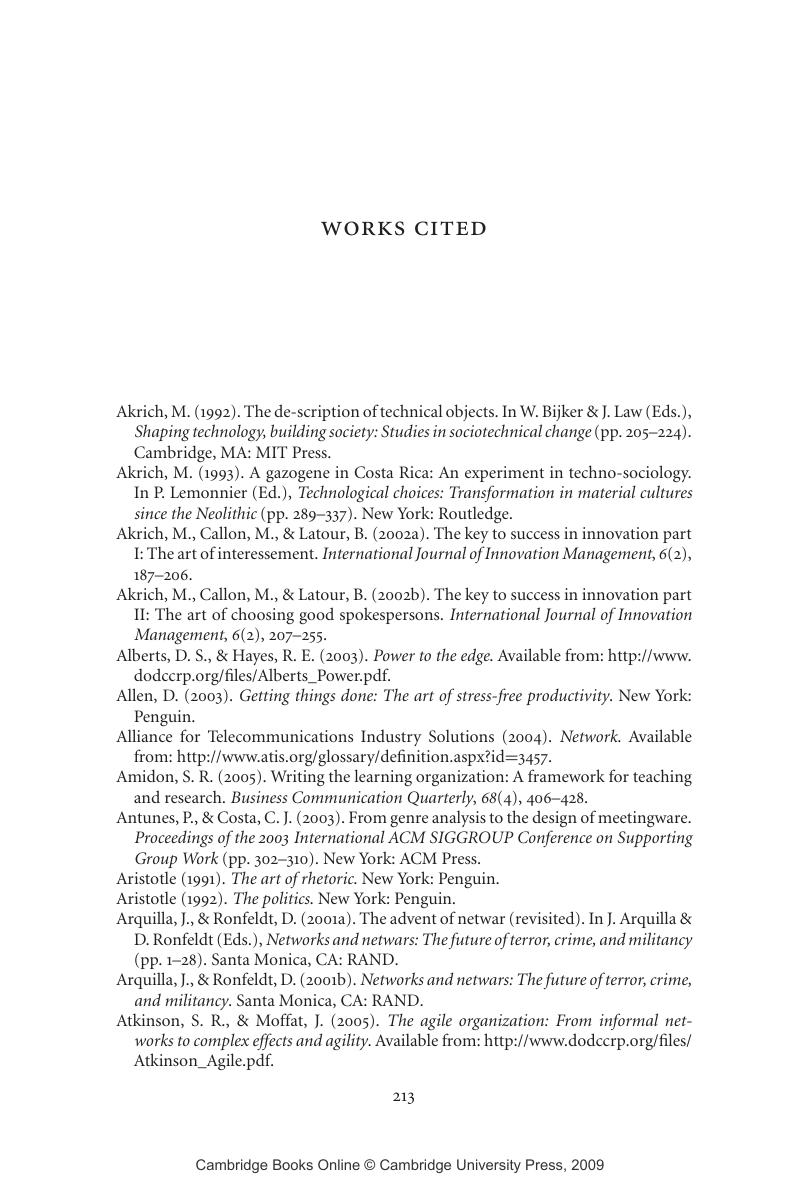Book contents
- Frontmatter
- Contents
- Acknowledgments
- 1 Networks, Genres, and Four Little Disruptions
- 2 What Is a Network?
- 3 How Are Networks Theorized?
- 4 How Are Networks Historicized?
- 5 How Are Networks Enacted?
- 6 Is Our Network Learning?
- 7 Conclusion: How Does Net Work Work?
- Appendix Notes on Methodology
- Works Cited
- Index
- References
Works Cited
Published online by Cambridge University Press: 08 August 2009
- Frontmatter
- Contents
- Acknowledgments
- 1 Networks, Genres, and Four Little Disruptions
- 2 What Is a Network?
- 3 How Are Networks Theorized?
- 4 How Are Networks Historicized?
- 5 How Are Networks Enacted?
- 6 Is Our Network Learning?
- 7 Conclusion: How Does Net Work Work?
- Appendix Notes on Methodology
- Works Cited
- Index
- References
Summary

Information
- Type
- Chapter
- Information
- NetworkTheorizing Knowledge Work in Telecommunications, pp. 213 - 226Publisher: Cambridge University PressPrint publication year: 2008
